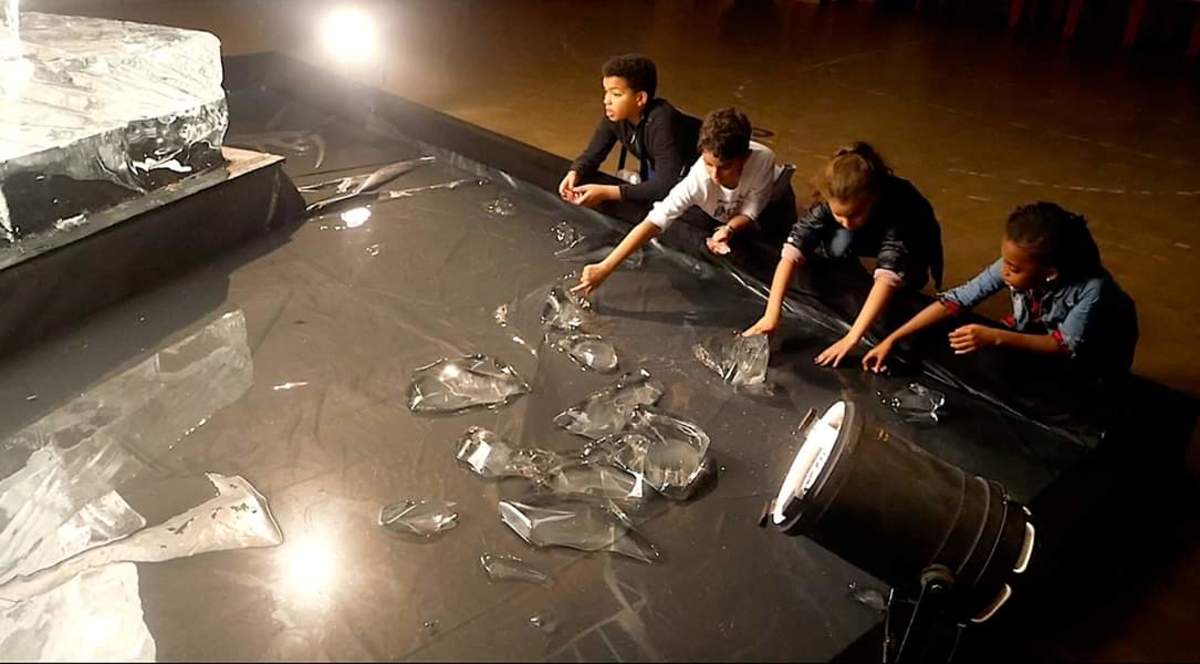PeoPL: Colonial Haunting and Decolonial Dreams
Door Kopano Maroga, op Sat Dec 01 2018 23:00:00 GMT+0000For over two years Brussels based artist Laura Nsengiyumva has been fighting for the realization of her installation PeoPL: an ice replica of the statue of King Leopold II in Trone, Brussels that, with the added body heat of those who gathered around it during Nuit Blanches in October, melted over the period of one evening. Though a seemingly simple concept at first glance, in the deft hands of the award winning Nsengiyumva the work is soon revealed to be layered in political and historical poetics: a poetic meditation on post-colonialism as it applies to Belgium, and Brussels more specifically.
Lees hier de Nederlandse versie
Nsengiyumva triumphed with the presentation of PeoPL after receiving opposition from the Royal Museum of Central Africa - the operational director allegedly going so far as to say: “Would you like it if I wanted to melt your father?” .
“Even though it’s melting, for me, it’s a peeling away of layers. And being able to actually… not even “deconstruct”, for me it’s “decompose”. And I think there is a need for us to let these legacies decompose.” (Author, theatre-maker and storyteller Ogutu Muraya in response to PeoPL)
The pallbearers of colonialism
We’re in an urgent and necessary moment in history where practitioners from all walks of life the world over are taking up the mantle of decolonization. From artists all the way through to economists there is a recalibration taking place in many public consciousness spheres that is, with increasing vigour, doing the work of reckoning with the horrors, the traumas, the unspeakable tragedies brought about by the colonial era, the consequences of which extend to the present day.
We collectively make our way through the stages of grieving what was lost to us due to colonialism.
For me, there is a palpable sense of mourning as we collectively make our way through the stages of grieving what was lost to us due to colonialism. And, in this grieving, there are those who have taken up their vocations as the pallbearers of the colonial era.
Handing over the coffin and everything that lies in it to the next generation, and the next generation, and the next generation, in the hope that at some point it will will be laid down into the dirt to decompose and we will be free to dream new futures outside of the framework of a trauma laden past.
With her work PeoPL Nsengiyumva joins the company of these pallbearers as she invites the audience to imagine the slow and steady decomposition of the archetypical example of white, colonial, patriarchal violence the Leopold statue represents. The countless drops of water collecting at the melting statues’ feet like tears: a well of inherited trauma, grief and unspeakable loss.
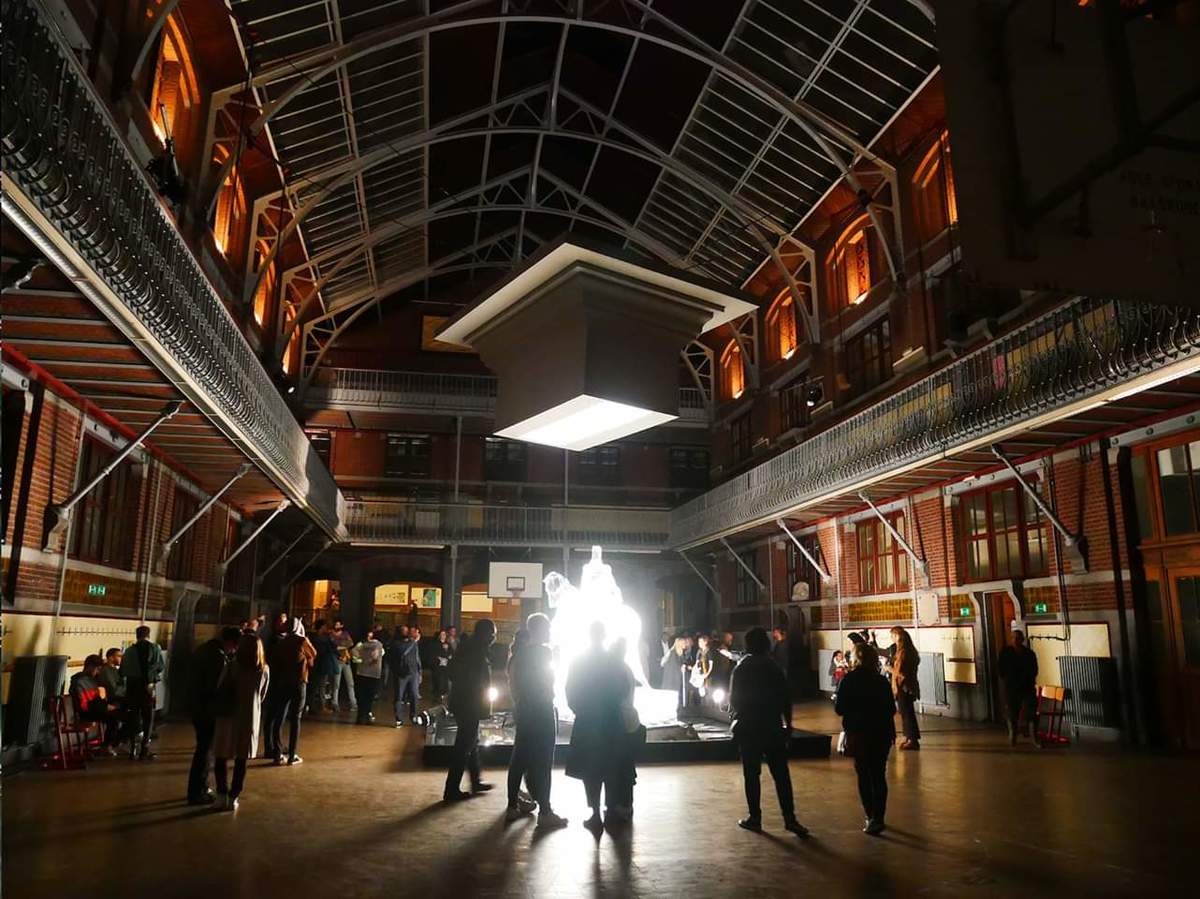
For those who should know but don’t know, King Leopold II was the second king of Belgium, most acclaimed for his colonization of the Congo and the subsequent theft and extraction of their resources which were leveraged to finance the construction of much of Brussels as it exists today and laying the foundation for much of the architecture, both structural and cultural, that Brussels (and, by extension, Belgium) experiences in the present day.
Thus, his legacy as “The Builder King”. A legacy that, as Nsengiyumva expounds in a talk she presented at the artivist production house Le Space in Brussels appears to go largely uncontested. Some municipalities going so far as to conduct homages and lay flowers at the feet of the man responsible for the deaths of an estimated 10-15 million people.
Double consciousness
In PeoPL Nsengiyumva engages with “...the disappearance of the colonial discourse… [and] addresses the image of Leopold II in the public space and phantasmagorical presence in the Belgian consciousness” To reify these thematics Nsengiyumva inverts the statue of Leopold by suspending the podium on which the statue sits above Leopold (and the audience’s) heads. A visual metaphor that reads for me as the unspoken, precarious and ominous legacy that hangs over all the inhabitants of Belgium.
This is one layer of the brilliance with which Nsengiyumva implicates the audience in the colonial discourse. There is a palpable and embodied sense of not only danger but of the impending weight of this foundation, the looming legacy of blood and bone that is suspended above the city of Brussels. In this way Nsengiyumva not only reinterprets the iconization of the Builder King but gives materiality to the haunting that besieges not only the city of Brussels but all those who have been impacted by the consequences of what the statue represents. Heavy is the head that wears the crown.
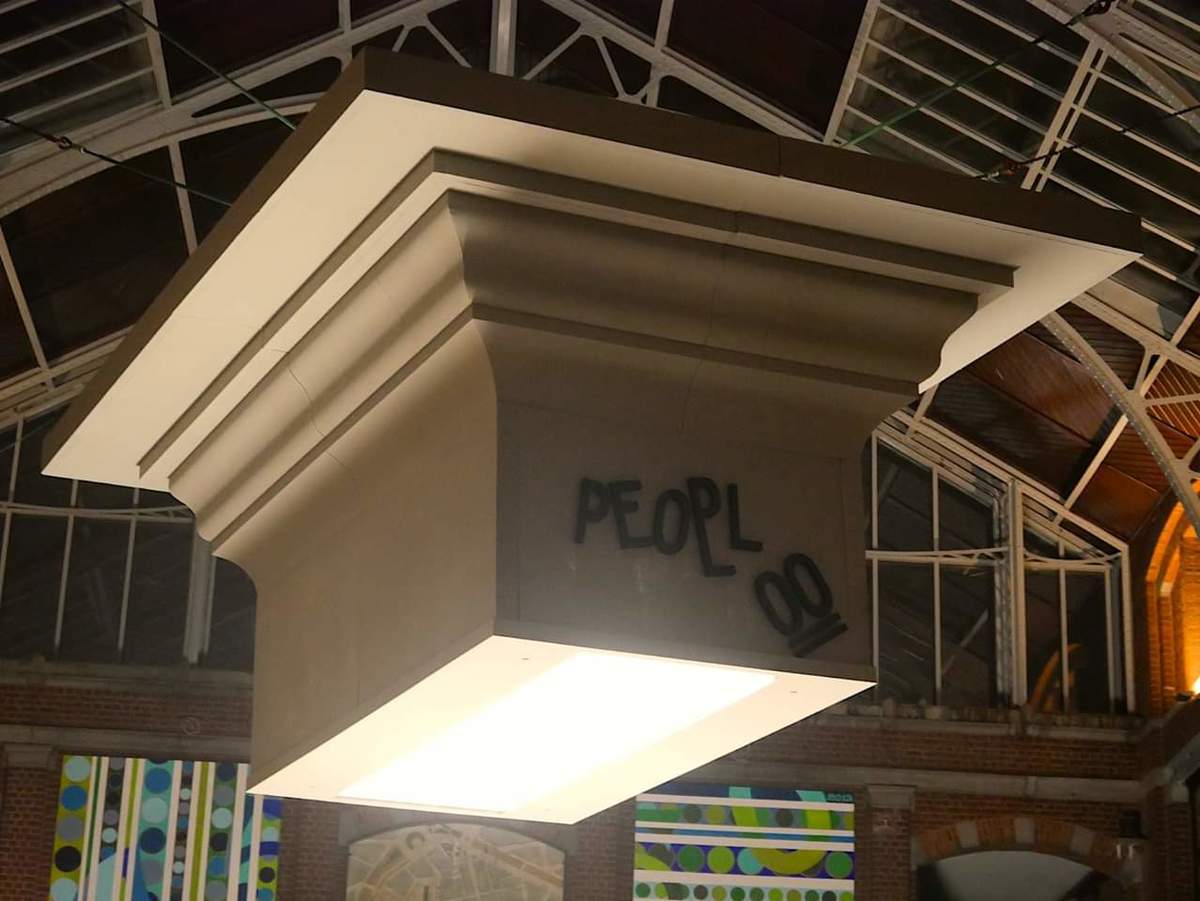
In rendering the Leopold statue in ice Nsengiyumva captures the image of the specter that haunts the public visual culture and psychological consciousness of Brussels. An amplification of the suspended podium above. The potency of this metaphor is in that it applies to all inhabitants of Belgium, whether of African descent or not. The haunting metaphor opens up a discourse around the subjectivity of memory and legacy. What may represent a legacy of development and empire for some represents a history of oppression, expropriation and trauma for others.
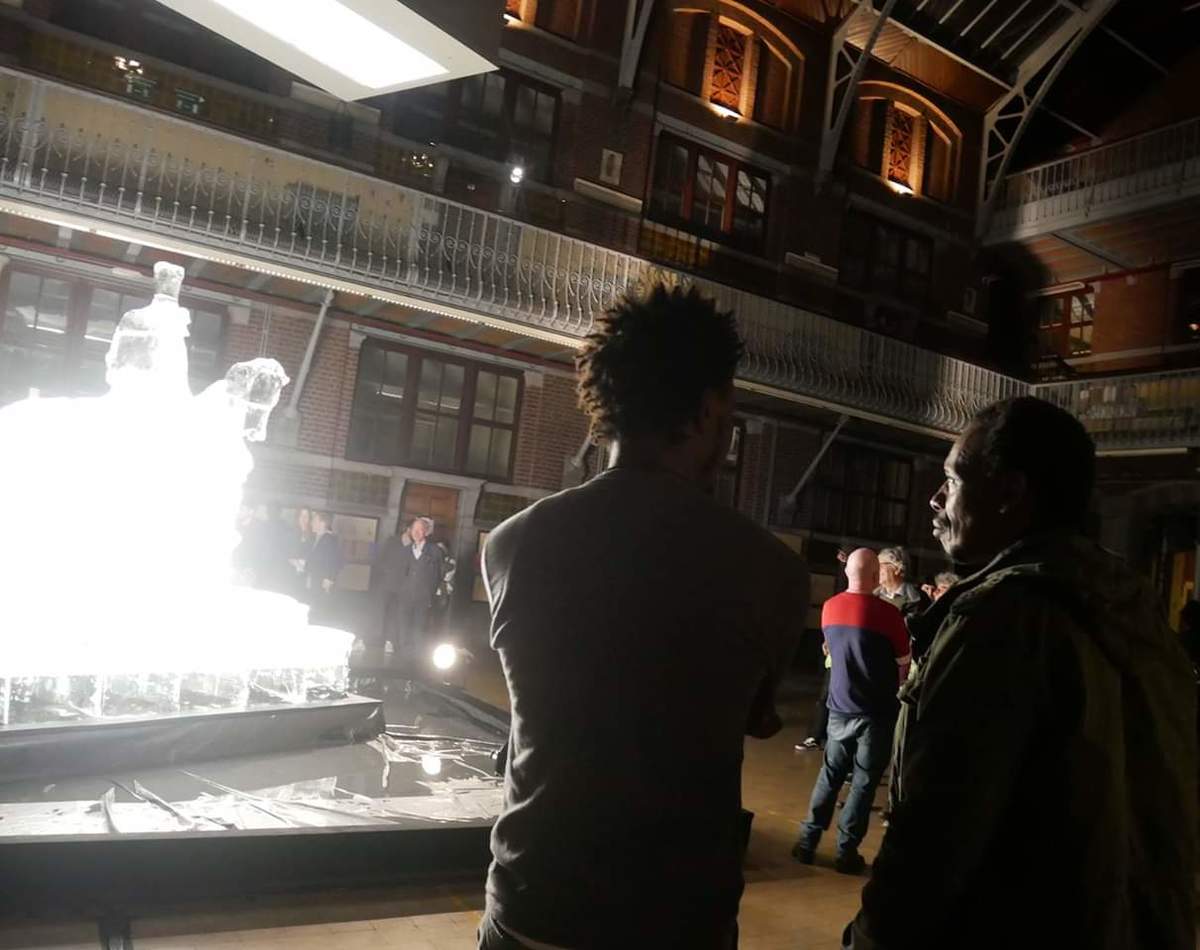
The complexity that Nsengiyumva invites is that we are implicated in both of these legacies by our presence around this reimagined statue. We cannot speak of what was built without speaking of what it was built upon.
“I live in Elsene, and if I’m sitting on the 95 bus going past Troon, it’s disturbing to see the statue of a mounted Leopold II. As a Belgian of Congolese origins, I want to feel at home here, and that’s not easy when you see statues of the oppressor of your ancestors.” (Tracy Bibo-Tansia, parliamentary assistant for the CD&V and vice-chair of the Vrouwenraad (Women’s Council)
Far from the first call to interrogate the statue of Leopold Nsengiyumva adds to and builds on a canon of cultural workers who are calling for a meaningful discourse not only around public visual culture and consciousness but around what the primacy of these objects in public space implies: that the psychology and culture of colonialism remain well intact and has been inverted to a much more covert form of quiet violence. One wherein which the history of violence enacted on Africans and people of African descent not only goes uncontested but is publicly celebrated.
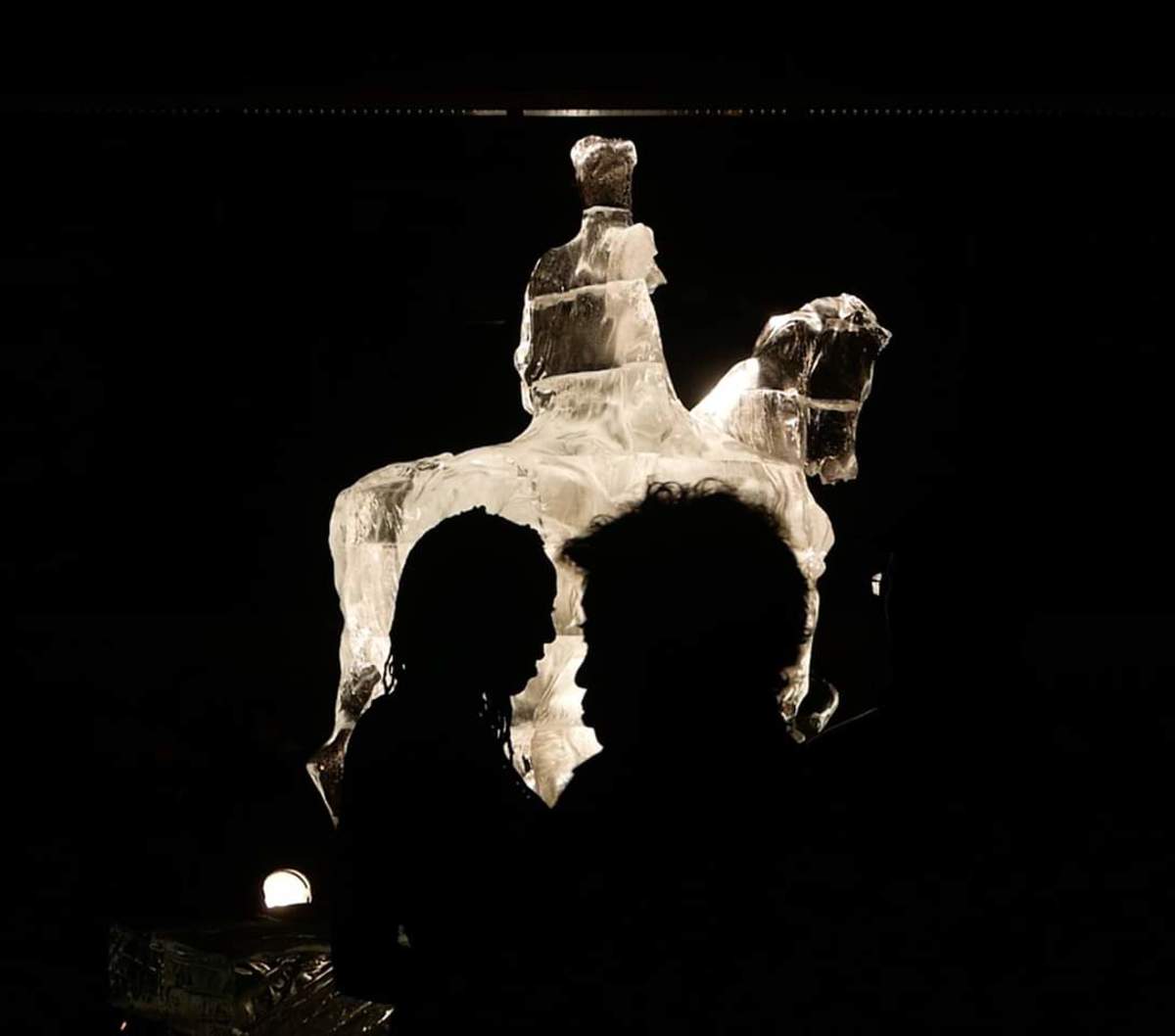
Furthermore, it implicates Belgians of African descent in a culture of colonial reverence while at the same time creating a public environment primed for their retraumatization. A double consciousness that is experienced daily yet largely unrecognized.
Work to do
What does that leave us with in terms of a way forward? I remain unconvinced that the removal of the statue would do the work of “decolonizing” public visual culture in that the consciousness that accompanies it does not need the statue to exist in order for it to go on undeterred. However, the statue’s removal could be seen as one gesture towards creating a public culture that takes seriously the psychological effects that public imagery has and takes accountability for continuing a public visual culture of venerating colonial mass murderers.
Instead of proposing easy answers PeoPL asks hard questions.
There don’t seem to be any clear answers, which is the power that PeoPL holds: instead of proposing easy answers it asks hard questions and catalyzes a space of learning, inquiry and the simple acknowledgement of suffering and non-consensual complicity. The work for us now is to consider how we develop strategies for holding all these cascading legacies and traumas as time continues its trajectory ever forward. Will we leave these traumas unreconciled to be superimposed onto future generations?
Here, I cannot help but recall an image from the night of the exhibition: a group of children, who were brought along to the exhibition by (who I assume to be) their parents, playing in the melted ice water and debris of the slowly decomposing statue. I wondered if this was somewhat prophetic. And, if so, if this was a vision of the future in which a generation are so far removed from the violence of these images and this legacy that they are free to imagine it as a playground or if this was a premonition of a world in such utter disrepair that all they are left with is what we failed to adequately resolve.
“There is more awareness, more awakening but there is still a lot more that needs to be done, there is still a lot more of reflection that needs to be done... the work is happening, but it is not a work that will end with our generation. It is a work that needs to be continued.” (Author, theatre-maker and storyteller Ogutu Muraya in response to PeoPL)
